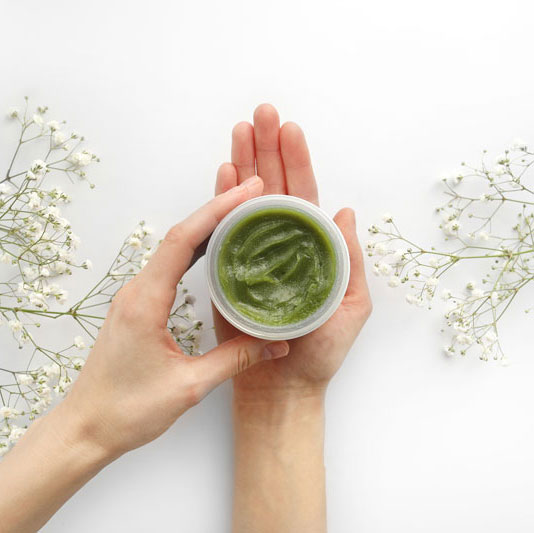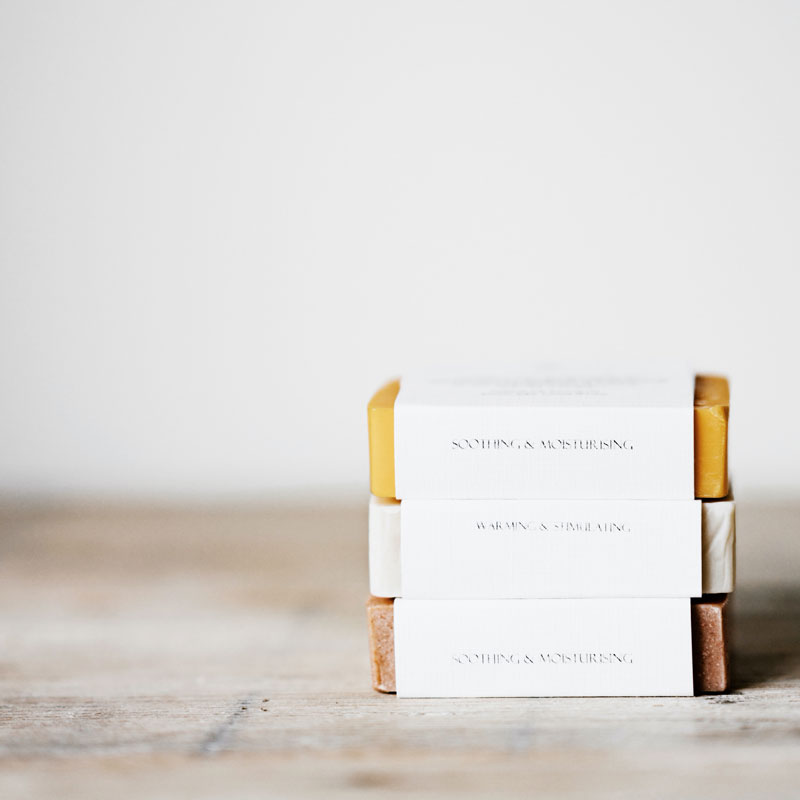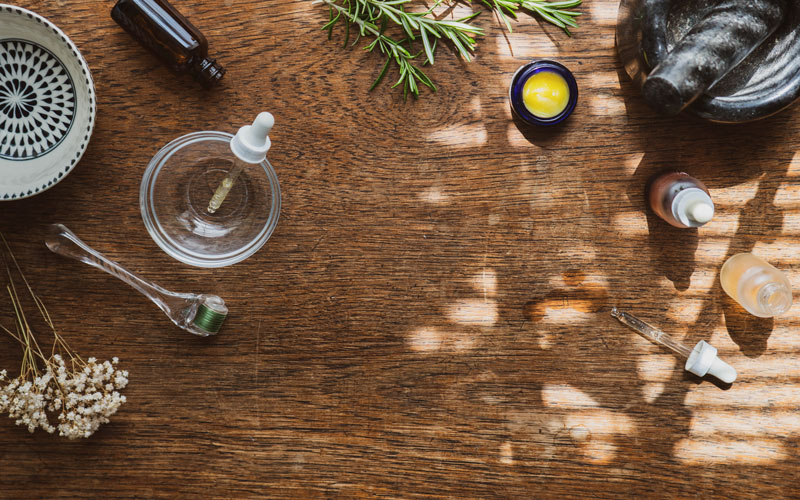Clean, slow, vegan, blue, green, zero waste, natural or organic… “New generation” clean beauty seems very promising, but you still need to understand what is covered by each of the versions of this well-meaning Clean Beauty.
With products that smell divine but are brimming with plastic, and those that are less harmful to the planet but not necessarily good for the skin, it’s not easy to know what’s what. Here’s a demystification of all the epithets to help you make the right choices for you.
Clean beauty
The term clean beauty encompasses all the aspects that come into play in the design of a product. The latter has to be virtuous, meaning ethically sound and considerate of nature when it comes to the manufacturing process, and also considerate of the consumer when it comes to the formulation. Every aspect of its life cycle is important: the sourcing of the ingredients; the formulation; the eco-design of the packaging; its ability to break down; the respect shown towards the men and women working to produce products; as well as the formulation’s being harmless for nature and for the skin, therefore free from any ingredients that are not biodegradable or are potentially harmful. There’s no need for a label (there isn’t one at present); the product “just” has to be clean and virtuous. Which, as it turns out, is quite a complex business. It’s not easy to find “perfectly clean” products, but confronted with growing demand from consumers, a great many brands are working to deliver this perfection.
Natural beauty

These are two words to be wary of. Because we talk about natural beauty when referring to organic products (since they really are natural), and also when referring to formulations without any precise credentials. With “natural ingredients”, “ingredients of natural origin” and “natural formulation”… How do you know what’s what? A natural ingredient is one which comes from nature (and not from chemical processes): water, minerals, plants. But the latter can be processed to extract active ingredients from them. They are then physically or chemically processed, and are then called “of natural origin”. Processing is not necessarily harmful. For example, maceration, extraction, grinding and fermentation keep all of the properties of the natural ingredient intact. So a formulation can contain up to 95% both natural ingredients and ingredients of natural origin and state as much in its claims, as is often the case. But the same formulation can also contain controversial ingredients. Just as the formulation of a product can be chemical in nature, but with a few organic ingredients that will be highlighted. In this case it’s essential to check the product’s ingredients.
Organic beauty
Organic beauty is easier to define, and standardised by charters and labels. To secure an organic label, the product’s composition must meet a set of specifications. This indicates the proportion of ingredients that are organic, natural or of natural origin (which varies from label to label) and certifies that ethical and environmentally-responsible values are upheld. Products are checked for conformity by accredited organisations. A long list of so-called “controversial” ingredients are banned from formulations, which guarantees consistency of products bearing the same label, even if they are under different brands. For example, PEGs (PolyEthylene Glycol compounds) are banned, since they are petrochemical oil derivatives that are not very biodegradable, produced via a polluting process and irritating for the skin. That way, we avoid harming the planet and human health. However, organic products can be a problem, not least if they contain essential oils (due to the risk of promoting photosensitivity or allergies). Moreover, the preservatives allowed in organic beauty products can prove less effective and therefore limit the formulations’ shelf life. Besides the formulation, the packaging of organic products is not always clean. Lastly, organic products produced on a large scale for mass retail can have environmental shortcomings, given the amounts of active ingredients needed to produce them.
Zero-waste beauty

The packaging is what we’re assessing here. It’s generally eco-designed upstream, and biodegradable downstream so that the consumer doesn’t leave any waste behind. Packaging made of carboard and papier, plant-based inks, pots made of aluminium and glass, re-usable or refillable boxes… The first material taken out of the equation is nasty old plastic! Thankfully so, since its production process is extremely polluting and it can’t be recycled endlessly. Another advantage of zero-waste beauty: some products are designed to be built to last and not disposable, so that they don’t become rubbish like cotton buds and cotton balls. That’s all good for the planet. This commitment generally goes hand-in-hand with clean formulations and eco-friendly beauty habits like using products in solid form (toothpaste, soap and shampoo bars), or multi-purpose products. Another version of this trend aims to offer refillable (instead of disposable) packaging. In some cases, it is made of plastic. So then it’s regrettable that they are produced in the first place, even if they cut down on lots of bottles afterwards.
Slow beauty and Slow Cosmétique®
The special epithet slow beauty is a societal trend that consists of turning skincare regimens into rituals, paring them down and growing old gracefully. It’s the name of a trend and of the Slow Cosmétique® association that gave rise to it, and also the wording ascribed to some brands to recognise their efforts in terms of social and environmental commitment. Broadly speaking, they are brands that work to offer products that are simple, ecologically sound and considerate of mankind and nature, in a non-standardised way. At the end of the day, Slow Cosmétique® is a way of fitting beauty into your lifestyle less artificially, in every way, by opting for products that do us good without harming the planet.

Vegan beauty
Even now, a great many ingredients used in standard beauty products still come from animals. A so-called “vegan” beauty product is one which adheres to the principle of veganism: no animal products are used to produce it, and it is not tested on animals. The ingredients most often decried are glycerine derived from animal fat, honey from bees, milk, squalene which is extracted from shark livers, lanolin from sheep’s wool (which, incidentally, is allowed in organic preparations) and collagen that comes from slaughterhouse pig carcasses. Their provenance, which of course does not appear in the INCI ingredients list, is difficult to identify. In most cases there are plant-based alternatives to these ingredients, but they are often more costly. So if nothing is specified, animal origin is unfortunately a fair assumption. Beware of some deceptive wording: “Castor oïl”, for example, is just another term for ricin oil. It’s worth noting that it’s still difficult to find a substitute for carmine, a red pigment made from ground cochineal insects and used in most lipsticks. Brands taking the vegan beauty route can choose from some 10 labels, like that of PETA or of The Vegan Society. However, the formulation can contain any number of chemicals, or generate polluting substances, since the labels don’t take these criteria into account.
Cruelty free
This epithet refers only to the absence of animal testing. Whereas since 2013, a law has prohibited the sale of beauty products tested on animals in the EU (except imported ones). In 2016 this ban was extended to products tested on animals outside the EU before being imported. So labelling a product as “not tested on animals” is somewhat disingenuous, since the brand is not making a commitment of its own, but simply abiding by the law.
However, some ingredients not used (or not only used) in beauty products may have been tested on animals before ending up in a formulation. At present, there’s no label that can guarantee with 100% certainty that none of the ingredients have been tested on animals.
Moreover, the formulation can contain animal products without having been tested on animals itself… So the epithet “cruelty free” can be misleading.
Incidentally, and conversely, any brand wanting to sell its beauty products in China used to be obliged to test its formulations on animals! So an international brand could be “cruelty free” in the EU, but not in China. The country has now (since 2021) lifted this obligation in favour of a certificate from the National Medical Products Administration and a production assessment.
Green beauty
This is a rather vague epithet that serves to outline a broad trend rather than an exact category of products. It is used to identify various natural or eco-friendly products families. Green beauty, which refers to a brand’s image, allows the marketing team to position it on the wider beauty market. “Green beauty” translates to something natural, of course, and also transparency, values and commitment on the part of a brand. However, there is no corresponding label, so it can mean anything, or just nonsense (including greenwashing). So what makes a brand green? Offering refill packs, even if they come in plastic packaging? A few organic ingredients drowned in a petrochemical formulation? You might say that a brand is green once it starts an eco-friendly initiative. This is very commendable, but does not reflect its commitments when it comes to formulation, nor pollution.
Blue beauty

Blue beauty is the latest trend, and could be the next tidal wave to sweep the beauty industry. It is the development of clean beauty, shifting towards an active ecological stance taken through beauty products. Not only will blue beauty be clean, safe, non-toxic and eco-friendly in every way, with a small carbon footprint. It will also help safeguard the natural environment, including the sea, with a view to restoring the water’s precious gifts to it. For beauty to become blue, it needs to gravitate to all things aquatic, from ingredients to initiatives and decisions that help to safeguard the planet’s wellbeing, especially the sea. This can be done by cutting down on waste (reduced, re-usable and/or biodegradable packaging) and developing formulations that are harmless to sea creatures. Combatting sea pollution via formulations and packaging formats entails hunting down plastic (picking up litter from beaches, for example). It also entails developing formulations based on farmed micro-algae, and designing biodegradable plant-based packaging items. All with a local circular economy project that draws on know-how in a totally transparent way… With a programme like that, blue beauty has a bright future ahead of it.
When you look at the proliferation of epithets and trends that claim to be part of a movement standing up for what is sustainable, responsible and ethically sound, the alliance between beauty and ecology is a self-evident and inevitable one. Let’s hope that this wish for transparency, integrity, product safety and virtuous practices on the part of the beauty industry will inspire others industries!







